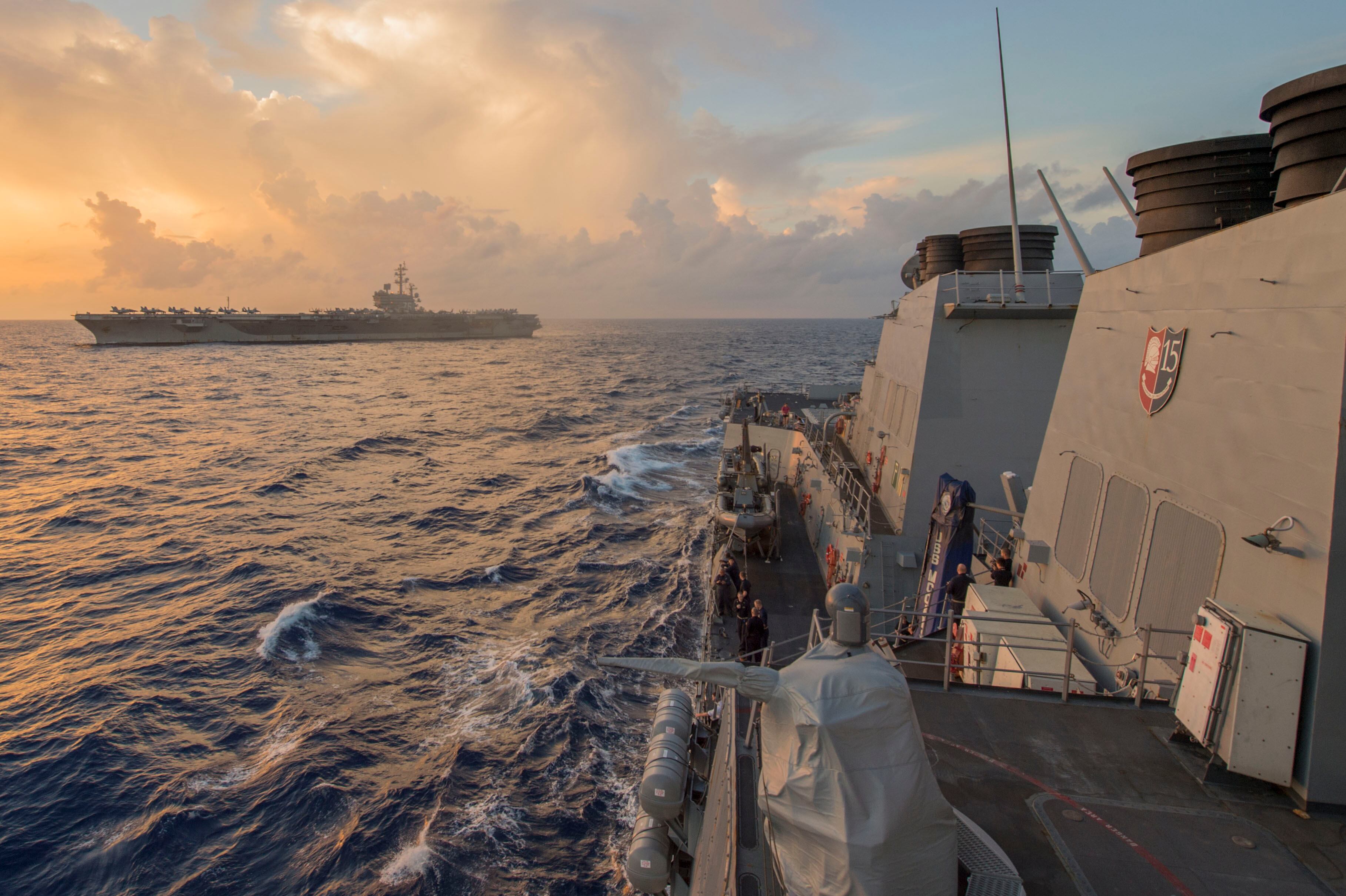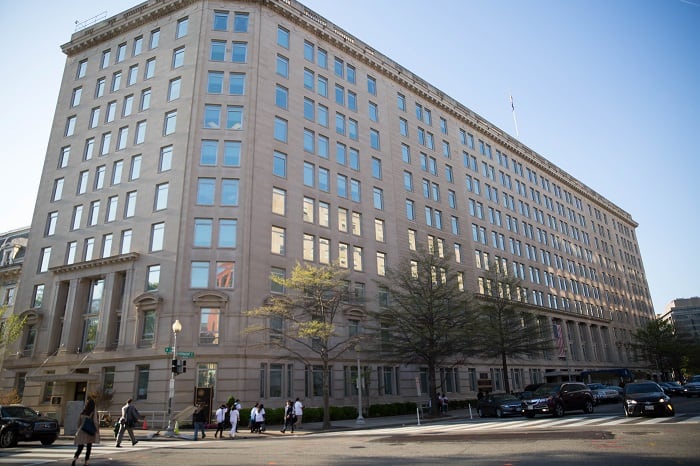Since Donald Trump took over as commander in chief, the U.S. Navy has not sailed within 12 miles of China’s man-made islands in the disputed South China Sea.
But a top U.S. Navy commander in the Pacific says that doesn’t mean Navy ships are reluctant to confront China and exercise the right to sail in international waters, reports Bloomberg.
"We just went through a change in administration," Pacific Fleet Commander Adm.iral Scott Swift said at a Monday briefing in Singapore. "I am not surprised that process has continued in a dialogue as the new administration gets its feet on the ground and determines where would be appropriate to take advantage of these opportunities and where we may want to wait."
Freedom of navigation operations have not been conducted in the South China Sea since President
Donald
Trump took office. FONOPS — routine under President Barack Obama — were intended to assert that waters remain open despite a growing Chinese military presence on the disputed islands. As the U.S. has put its presence in the disputed territory on hold, China continues to build airstrips on the islands, even launching its first domestically built aircraft carrier last month.
For months, the Navy's leadership has wanted to take a more aggressive stance and test China’s claims in the region. The carrier Carl Vinson and its strike group were originally being considered by the Navy for operations in the South China Sea before making news as part of the U.S. response to further nuclear weapon and long-range missile tests by North Korea.
In March, U.S. Pacific Command requested permission for a Navy warship to sail within 12 nautical miles of Scarborough Shoal, a disputed reef in the South China Sea that has been claimed by both China and the Philippines. But the March request, as well as two similar requests made in February, were turned down by Pentagon officials without ever making it to the White House, according to The New York Times.
"We just present the opportunities when we have a ship in the area and there is an area of interest," said Adm.
iral
Swift, adding that there has been "no change in policy" regarding the territorial disputes.
The lack of action in the region has caught many off guard as it seemed clear that the Trump administration wanted a tough stance toward Beijing. Then-candidate
Donald
Trump criticized President Obama on the campaign trail for being weak on China in the South China Sea.
During Secretary of State Rex Tillerson’s Senate confirmation hearings, he stressed that China needs to be denied access to the islands. But China’s actions remain unchallenged as the White House has turned to Beijing for assistance amid growing tensions with North Korea.
An unnamed official from the U.S. Defense Department told The New York Times that they believed a request for
N
naval operations within 12 nautical miles of the artificial islands was exactly the kind of thing President Trump would be looking for. The same official went on to say Defense Secretary
of Defense
James Mattis is putting the FONOPS on hold as part of a broader review of "the American security posture around the world."
The Spratly and Paracel island chains in the South China Sea have been at the center of territorial disputes for some 2,000 years, during China’s Han Dynasty, according to National Geographic. In recent years, China, Vietnam, Taiwan and the Philippines have claimed territory in the region, while the United States has allocated significant military resources towards upholding free navigation of the waters.
While it seems clear that the White House is looking to work with Chinese President Xi Jinping on a range of geopolitical issues, it remains unclear whether the administration will respond to the ongoing territorial disputes.





